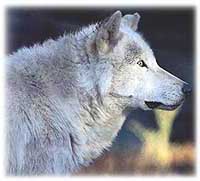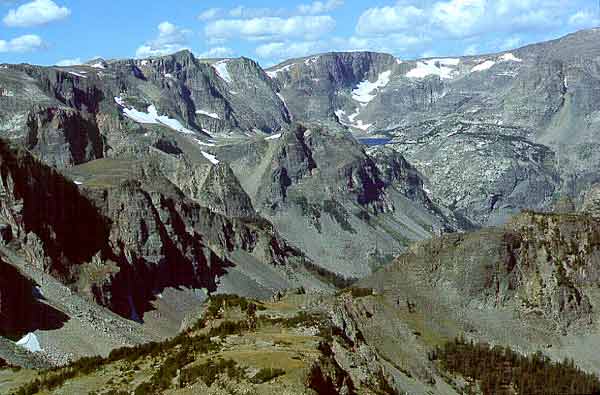|
DIMENSIONS: ecosystem |
History of Wolf Management in Yellowstone"Modern wolves and modern humans evolved in the same era. You could probably even say that they co-evolved. So, even though most of you probably have never seen a wild wolf, you know wild wolves in your bones."
For nearly 50 years wolves remained absent from the Yellowstone ecosystem and absent from the public mind. Few people missed the wolf and even fewer advocated its return. Unknowingly, President Nixon opened the door for wolf reintroductions in 1972 by banning key predator poisons on public lands. Shortly thereafter, the EPA extended this mandate to private lands. In 1973 the Endangered Species Act was enacted. Soon thereafter the Rocky Mountain Grey wolf was listed as endangered and a recovery team was established. The door that held the wolves back had begun to creek open.
From 1968-1988 legislation was introduced that would pave the way for wolves to be reintroduced to Yellowstone. Most of these bills did not pass, but they did begin to pique public interest. In 1988 republican Jim McClure wrote in Defenders magazine that he "was interested in trying to restore balance to Yellowstone National Park. The wolf in the only missing piece". McClure stated that as long as wolf reintroduction provided protection for rancher interests he would back the plan. In less than a year, Defenders had established a 100,000 compensation fund to reimburse ranchers for losses due to wolf depredation and 5,000 for any person who lets a wolf successfully breed on their property. In 1991, Defenders sued Fish and Wildlife to force reintroduction. Congress then voted for a wolf environmental impact statement or EIS and dismissed the lawsuit. Things really began to heat up and Defenders of Wildlife was stoking the fire. The first draft of the wolf EIS was released on July 1, 1994 and public hearings began. These hearings drew positive support and official reintroduction efforts began.
|


